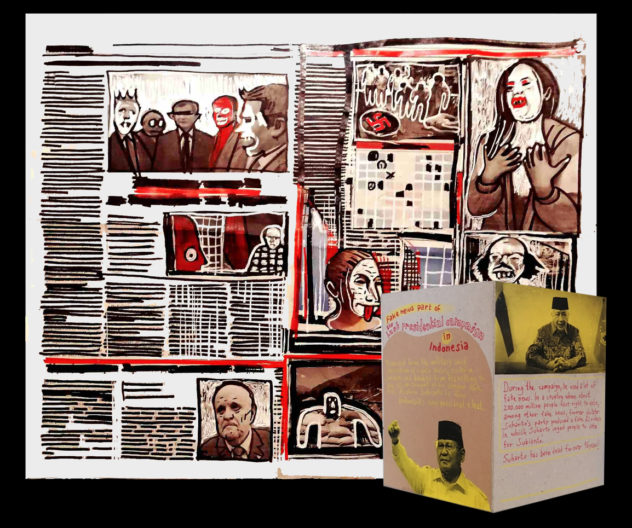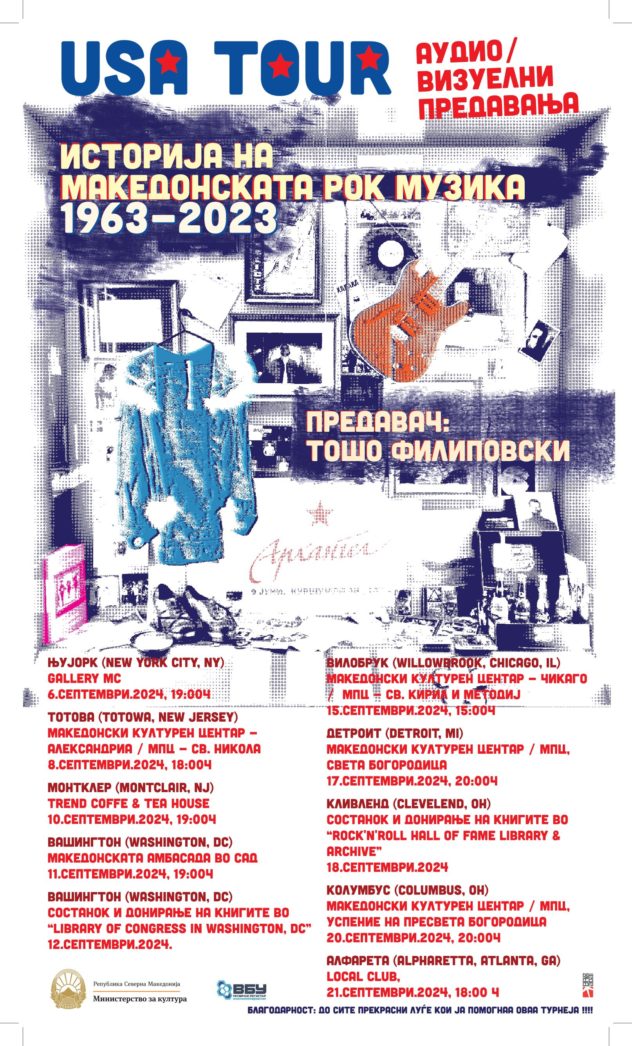CAPTURING THE NATIONS OF THE BALKANS: THROUGH THE CAMERA LENS OF THE MANAKI BROTHERS FROM BITOLA
Tuesday, August 6th from 6 to 8 pm: Reception for the Exhibition
Based on their significant creative accomplishments, it is no surprise that Macedonian, hence Balkan culture place the masters of photographic and film cameras, the brothers Janaki and Milton Manaki, on the highest pedestal. Their lifelong dedication to their craft, including capturing the first film footage in the Balkans, has rightfully earned the Manaki brothers the title of founders of cinematography in the region.
The roots of their fascination with documentation—capturing people and objects in motion, events, and presenting them on the film screen—can be traced back to their profound interest in photography, at the end of the 19th century and the beginning of the 20th century, when photography was a true technical novelty.
MILTON MANAKI JANAKI MANAKI
(left) (right)
Janaki Manaki’s first serious interest in photography emerged during his final years at the Romanian Lyceum, a boarding high school in the city of Bitola, between 1890 and 1896/1897.
Having completed his high school education and obtained a diploma that qualified him to work as an educator, Janaki was employed the following year as a teacher of Calligraphy and Drawing at the Romanian Commercial High School in Ioannina, a city near Epirus in the northwestern part of modern-day Greece. On February 18, 1898, at the heart of the same city, Janaki opened his first photography studio, beginning his career as an independent photographer. At that time, photography was considered a branch of art in which the realism of visual perception reached its peak, and his studio provided an outlet for his artistic refinement and imagination.
Janaki Manaki was born on May 18, 1878, in the village of Avdela, located on the slopes of Mount Pindus near Grevena, in modern-day Greece. He completed his primary education at the Romanian primary school in Avdela.
In contrast to his elder brother, Milton Manaki showed no particular inclination towards formal education. After completing elementary school, Milton enrolled in the Romanian Commercial Gymnasium in Ioannina but completed only the first year. Subsequently, he began assisting his brother Janaki at his photography studio, where he acquired the skills of the trade. Guided by Janaki, Milton gradually took on professional responsibilities, including preparing chemicals such as developers and fixers, developing and fixing negatives and positive prints, and eventually capturing studio and outdoor portraits. During this apprenticeship, he learned fundamental photographic principles such as lens operation, aperture control, shutter speed, sharpness, and composition. In a short period, Milton emerged as a proficient master of photography.
MILTON MANAKI was born on September 9, 1882 in the village of Avdela.
He completed his primary education at the Romanian trade school in Ioannina.
In 1904, the Manaki brothers acquired a property on the main street “Shirok Sokak” in the heart of Bitola, a city that served as a crucial political, military, economic, cultural, and administrative center in the Bitola Vilayet (province) at the time. Their investment was driven by a sole ambition: to establish their own photography studio in the city.
By 1905, Janaki and Milton Manaki relocated to Bitola and commenced preparations to realize their goal. During this period, according to Milton’s accounts, Janaki Manaki traveled to London, the capital of the United Kingdom of Great Britain, where he successfully purchased the renowned “Bioscope 300” movie camera from the esteemed company “Charles Urban Trading”.
JANAKI MANAKI visiting London in 1905.
On December 8, 1905, in Bitola, the Manaki brothers opened their photography studio, named ART PHOTOGRAPHY STUDIO. Besides photography, they began capturing events and faces from the Balkans using a film camera. Their studio was equipped to high standards, akin to renowned photo studios in cities like Constantinople, Bucharest, Vienna, and Paris. They utilized top-quality photographic materials supplied around European centers, with glass plate negatives of various sizes. For producing high-quality positives, they employed a contact printing method. Additionally, the Manaki brothers applied toning techniques to their prints, thus imparting them with a distinctive old gold hue.
The craftsmen who constructed the atelier on the main street.
Janaki and Milton Manaki and the craftsmen presented in the photo (1904)
Owing to their six years of independent work experience in Ioannina, the Manaki brothers arrived in Bitola as established photographers. They swiftly secured their prominence in the city, establishing themselves alongside existing Bitola photographers such as Atanas Lozanchev, Lazar Kermilo, the Tegu brothers, and others, including the Tsapevi brothers from Prilep.
The Manaki brothers made a firm decision to construct a building with a separate section in the city of Bitola, which would house their photographic studio and serve as a venue for film screenings. On September 10, 1921, they purchased a property with an area of 889 square meters in the city center, located at 93 Kral Petar Street.
A year later, in the second half of 1922, they began to realize their goal. With funds obtained from bank loans and creditors Kosta Chomić and Dimitrija Djordjevic, the Manaki brothers jointly commenced the construction of a purpose-built cinema building.
The building of the Manaki cinema was well equipped with the necessary inventory, and consisted of a lounge, a kitchen, a room where drinks could be served and two separate toilets.
The cinema hall accommodated 373 seats. The first floor featured a balcony with three boxes.
The parterre was divided into two sections. One section contained a single box, while the other section housed the remaining seats, designated as the second tier. The movie screen was positioned in front of these seats.
Janaki Manaki – bottom right in front of cinema.
Milton Manaki noted an interesting aspect from the era of silent films, mentioning that they regularly engaged musical accompaniment. Various musicians, including chalgi and others, were hired depending on availability. It was crucial to ensure that film screenings were not devoid of musical accompaniment, as this was considered essential to the viewing experience, as otherwise it was ugly, almost unbearable. Managing this aspect involved not only the timely acquisition of films from Belgrade and Zagreb but also arranging the most suitable musical accompaniment possible.
Poster оf the company “MANAKI Brothers”.
The successful photographic and film art, enriched with a profound sense of aesthetics and fueled by an unwavering commitment to staying abreast of technical innovations, quickly elevated Janaki and Milton Manaki’s names to the annals of European and world cultural history.
Significantly, the Manaki brothers are among the few photographers who had the privilege of photographing three sovereigns: Romanian Prince Carol I, Ottoman Sultan Mehmed Reshad V, and Crown Prince Aleksandar I Karađorđević of the Kingdom of Yugoslavia.
The documentary nature of the Manaki brothers’ photographs provides us with a unique artistic insight into urban landscapes, various cultural, educational, and religious events, prominent personalities, and daily life from the late 19th and early 20th centuries. Their substantial photographic legacy encompasses images of sovereigns, high-ranking military and political figures, numerous individual, group, and family portraits, spanning from the Young Turk Revolution and the Balkan Wars to the First and Second World Wars, as well as the post-war period.
All of this underscores the exceptional documentary significance of their cultural legacy, which today stands as an invaluable historical resource for studying the history of the Balkan peoples.
The largest collection of their photographic materials from their lifetime’s work is currently housed at the State Archives of the Republic of North Macedonia, specifically in its Regional Department in Bitola. These are cataloged under Fund No. 580, the Manaki Brothers, and Fund No. 955, the Milton Manaki Collection. The collection comprises a total of 18,513 photographic negative units, including 7,715 glass plates of various sizes, 2,087 sheet films, and 8,711 roll films. Additionally, it includes 17,854 photographs, among which 10,952 are original prints captured personally by the Manaki brothers in their studio, while 6,902 photographs were reproduced in the Bitola Archive laboratory from glass plate negatives and sheet films.


